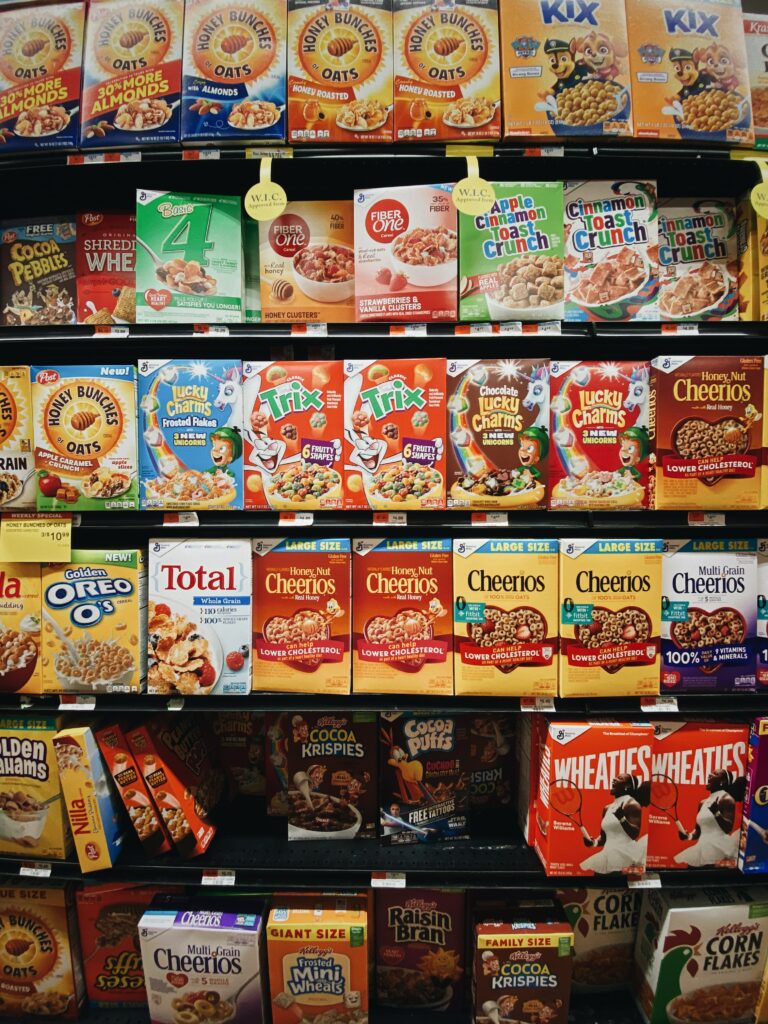Choosing Healthier Cereals
go.ncsu.edu/readext?873386
en Español / em Português
El inglés es el idioma de control de esta página. En la medida en que haya algún conflicto entre la traducción al inglés y la traducción, el inglés prevalece.
Al hacer clic en el enlace de traducción se activa un servicio de traducción gratuito para convertir la página al español. Al igual que con cualquier traducción por Internet, la conversión no es sensible al contexto y puede que no traduzca el texto en su significado original. NC State Extension no garantiza la exactitud del texto traducido. Por favor, tenga en cuenta que algunas aplicaciones y/o servicios pueden no funcionar como se espera cuando se traducen.
Português
Inglês é o idioma de controle desta página. Na medida que haja algum conflito entre o texto original em Inglês e a tradução, o Inglês prevalece.
Ao clicar no link de tradução, um serviço gratuito de tradução será ativado para converter a página para o Português. Como em qualquer tradução pela internet, a conversão não é sensivel ao contexto e pode não ocorrer a tradução para o significado orginal. O serviço de Extensão da Carolina do Norte (NC State Extension) não garante a exatidão do texto traduzido. Por favor, observe que algumas funções ou serviços podem não funcionar como esperado após a tradução.
English
English is the controlling language of this page. To the extent there is any conflict between the English text and the translation, English controls.
Clicking on the translation link activates a free translation service to convert the page to Spanish. As with any Internet translation, the conversion is not context-sensitive and may not translate the text to its original meaning. NC State Extension does not guarantee the accuracy of the translated text. Please note that some applications and/or services may not function as expected when translated.
Collapse ▲Cereal can be a great breakfast option. It’s quick, easy, and there are lots of healthy options to choose from. Many cereals have lots of added nutrients that children need to grow up healthy, especially when they’re paired with milk. Although there are many healthy cereals, there are also many unhealthy options too. Check out these tips to make sure you are choosing the best cereal for your family.

Colorful Packaging – Cereals marketed to children–the kind with colorful packaging, cartoon characters, and miniature versions of sweets like cookies and marshmallows–usually aren’t a healthy choice. These are often full of sugar and sodium and have less of the important nutrients like fiber and protein. So don’t get distracted by pretty packaging! Instead, take a look at the nutrition facts label:
Serving Size – Look at the serving size. Some brands list small serving sizes to make their cereals seem healthier. If you know you’ll eat more than the recommended serving, make sure to adjust the information on the nutrition label to the portion you normally eat.
Nutrition Label – Choose whole grains. If the box doesn’t say “100% whole grain,” look at the first ingredient on the nutrition label’s ingredient list. If it says the words “whole” or “bran,” you’re on the right track!
Fiber – Fiber is also important in a healthy cereal, and goes hand-in-hand with whole grains. This nutrient helps with healthy digestion, and it helps us feel full for longer. Try to find cereals with at least 2 grams of fiber per serving.




